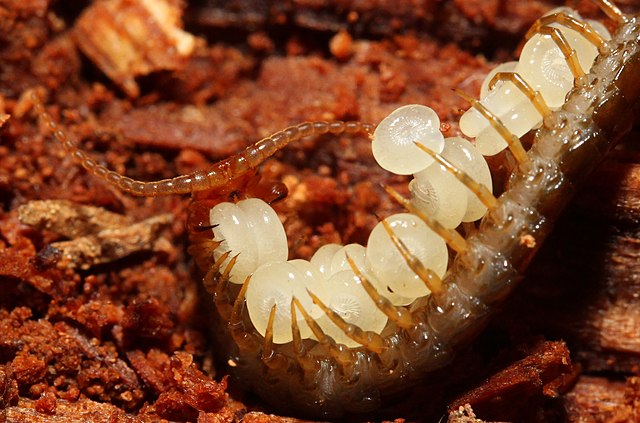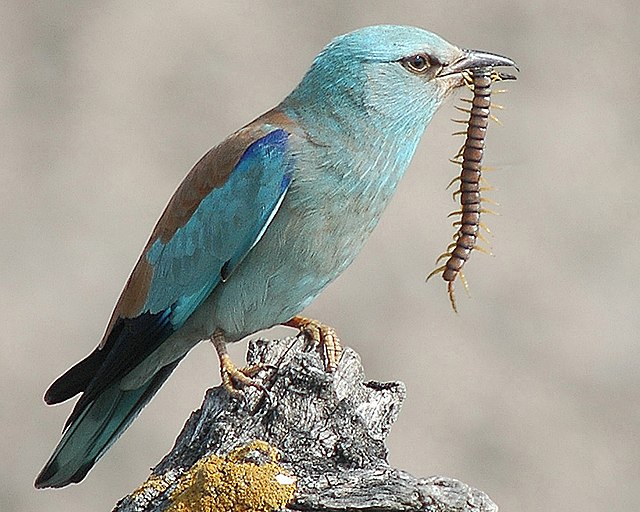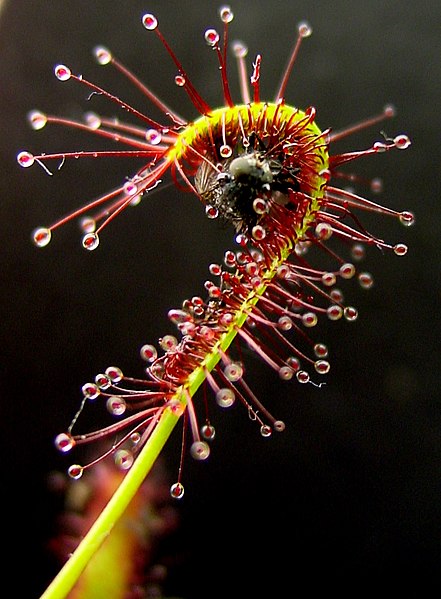Centipedes are predatory arthropods belonging to the class Chilopoda of the subphylum Myriapoda, an arthropod group which includes millipedes and other multi-legged animals. Centipedes are elongated segmented (metameric) creatures with one pair of legs per body segment. All centipedes are venomous and can inflict painful stings, injecting their venom through pincer-like appendages known as forcipules or toxicognaths, which are actually modified legs instead of fangs. Despite the name, no centipede has exactly 100 pairs of legs; the number of pairs of legs is an odd number that ranges from 15 pairs to 191 pairs.
The forcipules of Eupolybothrus cavernicolus (Lithobiidae)
A collage showing the ultimate legs of various centipedes. From top left, proceeding clockwise: Rhysida spp., Scolopocryptops trogloclaudatus, Scolopenda dehaani, Lithobius proximus, Lithobius forficatus, Scolopendra cingulata.
A centipede mother protecting her first instar offspring
A centipede (Scolopendra cingulata) being eaten by a European roller
Predation is a biological interaction where one organism, the predator, kills and eats another organism, its prey. It is one of a family of common feeding behaviours that includes parasitism and micropredation and parasitoidism. It is distinct from scavenging on dead prey, though many predators also scavenge; it overlaps with herbivory, as seed predators and destructive frugivores are predators.
Solitary predator: a polar bear feeds on a bearded seal it has killed.
Social predators: meat ants cooperate to feed on a cicada far larger than themselves.
Spider wasps paralyse and eventually kill their hosts, but are considered parasitoids, not predators.
Carnivorous plant: sundew engulfing an insect








